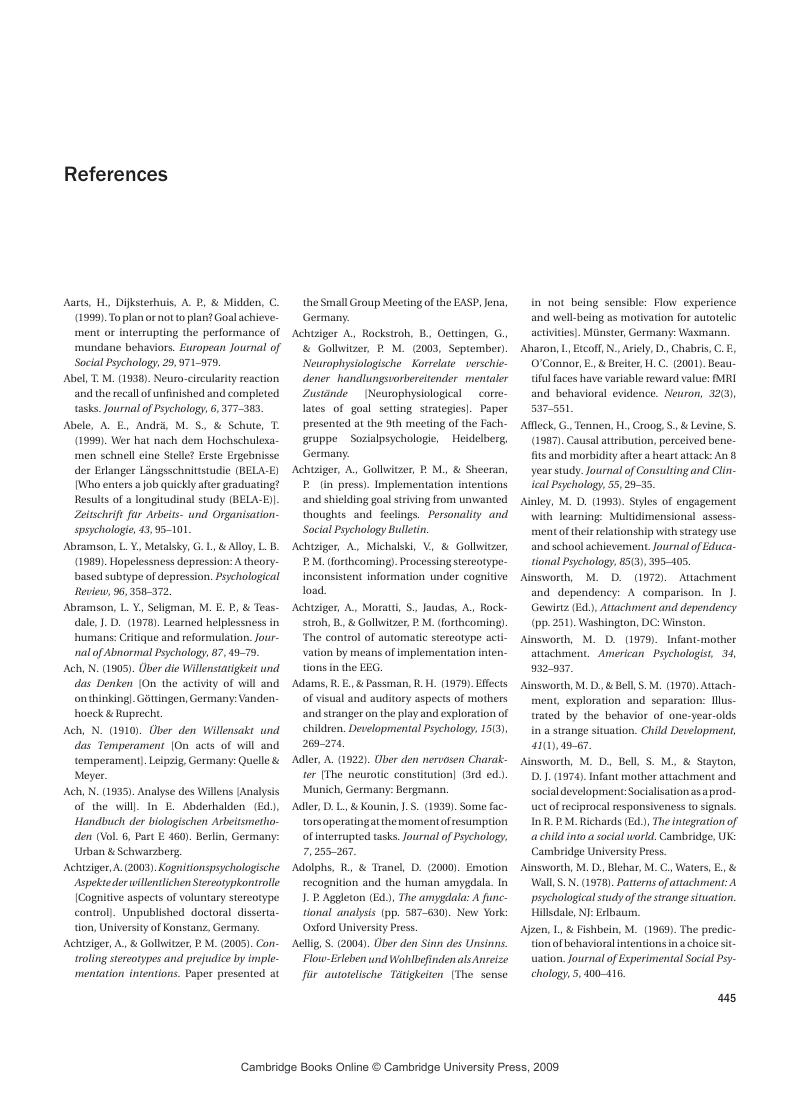Book contents
- Frontmatter
- Contents
- Preface to the Second English Edition
- Contributors
- 1 Motivation and Action: Introduction and Overview
- 2 Historical Trends in Motivation Research
- 3 Trait Theories of Motivation
- 4 Situational Determinants of Behavior
- 5 Motivation as a Function of Expectancy and Incentive
- 6 Achievement Motivation
- 7 Social Bonding: Affiliation Motivation and Intimacy Motivation
- 8 Power Motivation
- 9 Implicit and Explicit Motives
- 10 Biopsychological Aspects of Motivation
- 11 Motivation and Volition in the Course of Action
- 12 Individual Differences in Self-Regulation
- 13 Intrinsic Motivation and Flow
- 14 Causal Attribution of Behavior and Achievement
- 15 Motivation and Development
- References
- Index
- References
References
Published online by Cambridge University Press: 08 August 2009
- Frontmatter
- Contents
- Preface to the Second English Edition
- Contributors
- 1 Motivation and Action: Introduction and Overview
- 2 Historical Trends in Motivation Research
- 3 Trait Theories of Motivation
- 4 Situational Determinants of Behavior
- 5 Motivation as a Function of Expectancy and Incentive
- 6 Achievement Motivation
- 7 Social Bonding: Affiliation Motivation and Intimacy Motivation
- 8 Power Motivation
- 9 Implicit and Explicit Motives
- 10 Biopsychological Aspects of Motivation
- 11 Motivation and Volition in the Course of Action
- 12 Individual Differences in Self-Regulation
- 13 Intrinsic Motivation and Flow
- 14 Causal Attribution of Behavior and Achievement
- 15 Motivation and Development
- References
- Index
- References
Summary

- Type
- Chapter
- Information
- Motivation and Action , pp. 445 - 500Publisher: Cambridge University PressPrint publication year: 2008



